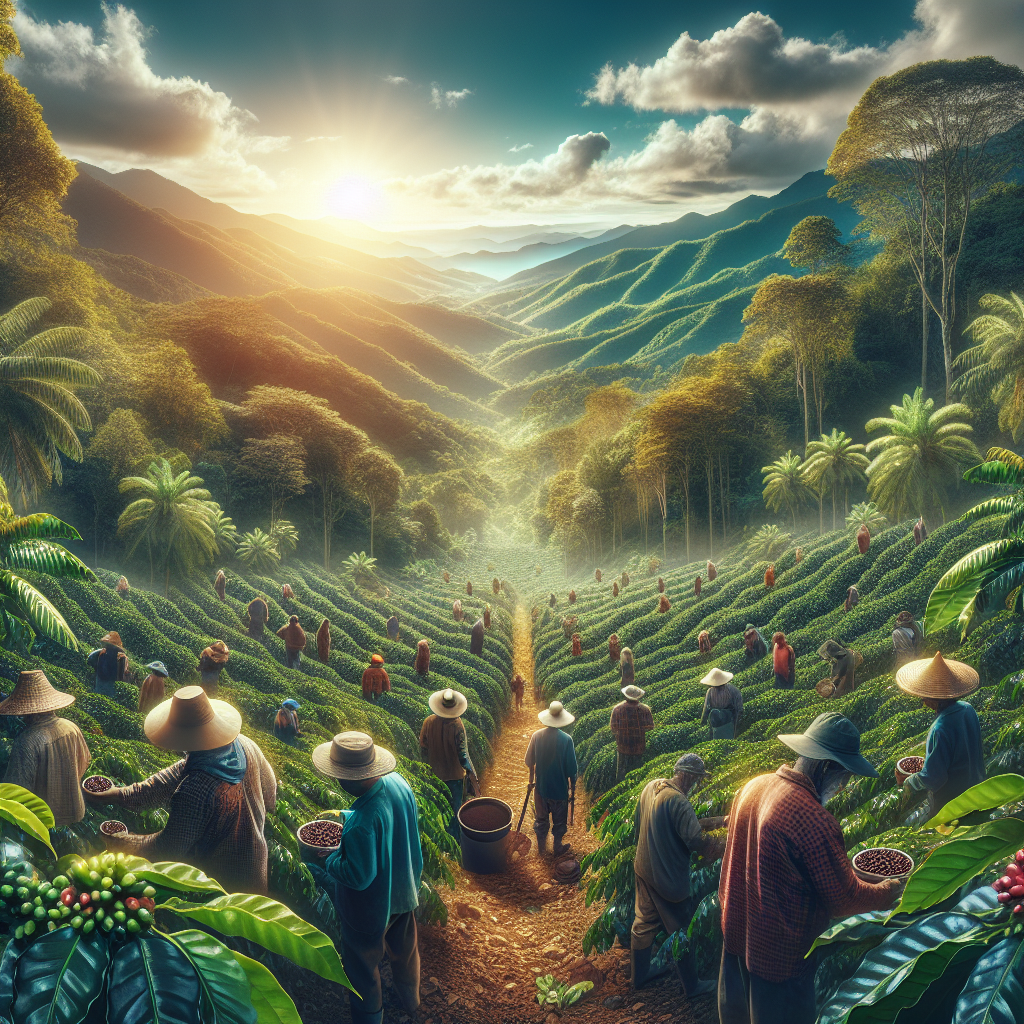“`html
The Role of Robusta Coffee Beans in Sustainable Coffee Farming Practices
Introduction
Robusta coffee, a significant player in the coffee industry, is known for its distinct flavor profile and high caffeine content. This bean variety is crucial not only for its taste but also for its role in sustainable coffee farming practices. In this blog, we will explore various aspects of Robusta coffee, including its physical characteristics, growing conditions, disease resistance, economic sustainability, and environmental impact.
1. Understanding Robusta Coffee Beans
Robusta coffee beans are smaller and rounder compared to the elongated shape of Arabica beans. They are known for their stronger, more bitter flavor, with earthy undertones and notes of chocolate. The aftertaste is often described as slightly grainy and reminiscent of peanuts, offering a unique drinking experience.
Robusta beans have a lower acidity compared to Arabica, making them smoother on the palate. One of the standout features is their high caffeine content, which is about double that found in Arabica beans. This contributes to the strong flavor and makes Robusta popular in espresso blends. Understanding these features is crucial for consumers who wish to appreciate the full spectrum of coffee flavors.
Growing Conditions for Robusta Coffee
| Aspect | Description |
|---|---|
| Optimal Growing Conditions | Robusta coffee thrives in warm, humid climates with ample rainfall. |
| Ideal Altitudes | Generally grows well at altitudes between 200-800 meters. |
| Climate Needs | Prefers temperatures ranging from 24°C to 30°C. |
| Geographic Areas | Commonly found in Africa, Southeast Asia, and South America. |
| Growing Cycle | Typically takes 8-10 months from flowering to harvest. |
| Comparison with Arabica | Robusta is more resistant to pests and can tolerate lower elevations. |
| Economic Implications | Higher yields and lower costs make Robusta economically favorable. |
| Environmental Impact | Robusta can thrive in less-than-ideal conditions, reducing the need for expansive land use. |
3. Disease Resistance and Resilience of Robusta Coffee
One of the most notable attributes of Robusta beans is their resistance to diseases. Robusta coffee plants are highly resistant to pests and diseases, making them a low-maintenance option for farmers. This resilience significantly reduces the need for chemical pesticides, contributing to sustainable farming practices.
Case studies reveal that Robusta growers benefit immensely from the resilience of these plants. The reduced need for pesticides not only cuts down on farming costs but also minimizes environmental pollution. As a result, Robusta’s disease resistance plays a pivotal role in fostering sustainable and eco-friendly coffee farming practices.
4. Economic Sustainability of Robusta Coffee Farming
Robusta plants are known for their higher yield and productivity compared to Arabica plants. This increased productivity directly translates to better economic returns for Robusta farmers. The market demand for Robusta coffee remains strong owing to its unique flavor and high caffeine content.
The economic sustainability of Robusta coffee farming is further underscored by case studies that highlight successful operations. High yields help in minimizing farming costs and enhancing farmers’ incomes. Furthermore, the resilience of Robusta plants ensures that farmers can withstand fluctuating market conditions, making it a reliable crop choice.
5. The Environmental Impact of Robusta Coffee Cultivation
The environmental impact of coffee farming cannot be overstated, and Robusta coffee has its unique environmental footprint. The lower altitude and warmer growing conditions of Robusta plants allow for the cultivation in areas that may not be suitable for Arabica. This adaptability reduces the carbon footprint associated with transporting coffee from more distant, higher-altitude regions.
Sustainable farming techniques, such as agroforestry, are increasingly being adopted by Robusta growers. These practices enhance biodiversity and improve soil health, contributing to the sustainability of coffee farming. Additionally, Robusta cultivation often requires less water and fewer inputs, making it a more environmentally-friendly option.
Conclusion
Robusta coffee plays a crucial role in the sustainable future of coffee farming. From its robust disease resistance and high yield to its adaptability to diverse growing conditions, Robusta stands out as a viable and eco-friendly coffee variety. As consumers become more aware of the significance of sustainable coffee, the demand for Robusta is likely to grow.
Explore more about different coffee drinks here and dive deeper into the fascinating world of coffee.
“`
Shop at Breville now!
https://breville.oie8.net/oqDqrE
Shop RobustaCoffee Beans at Amazon now!
Click here





